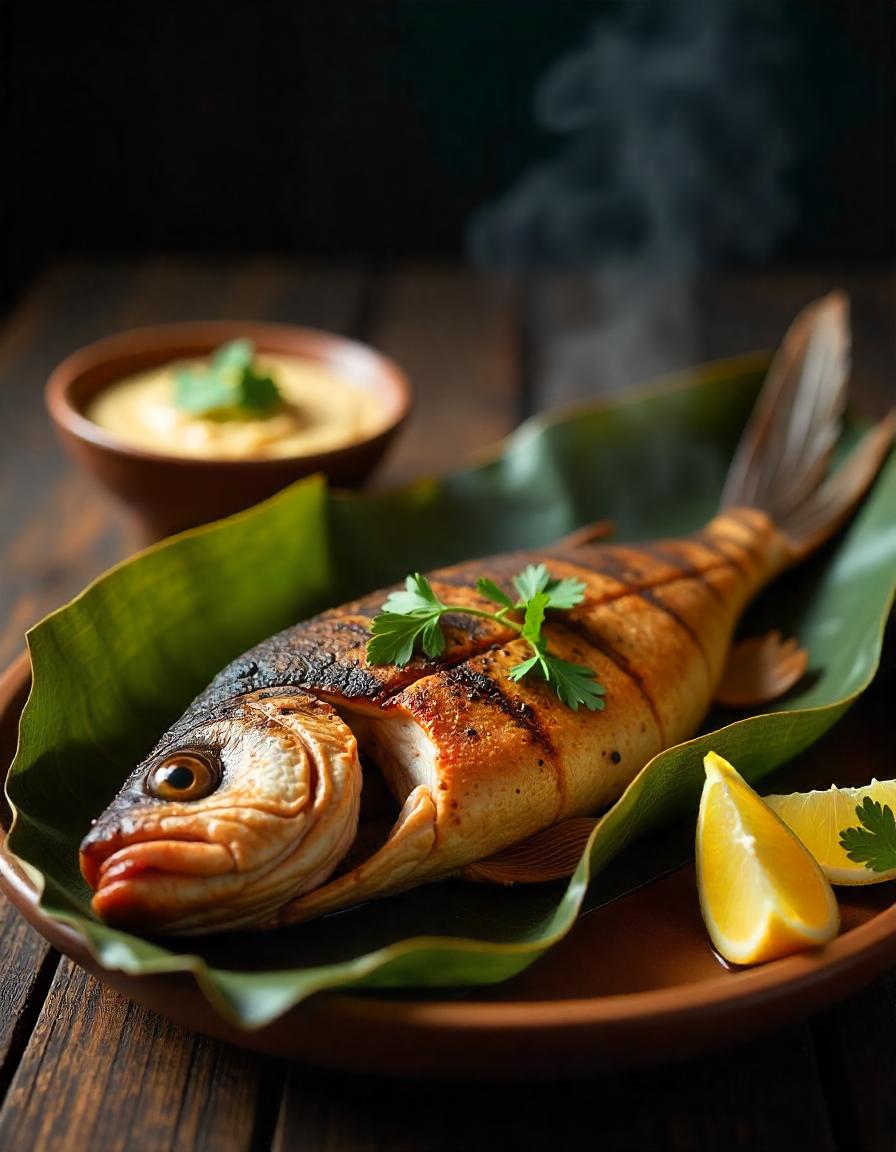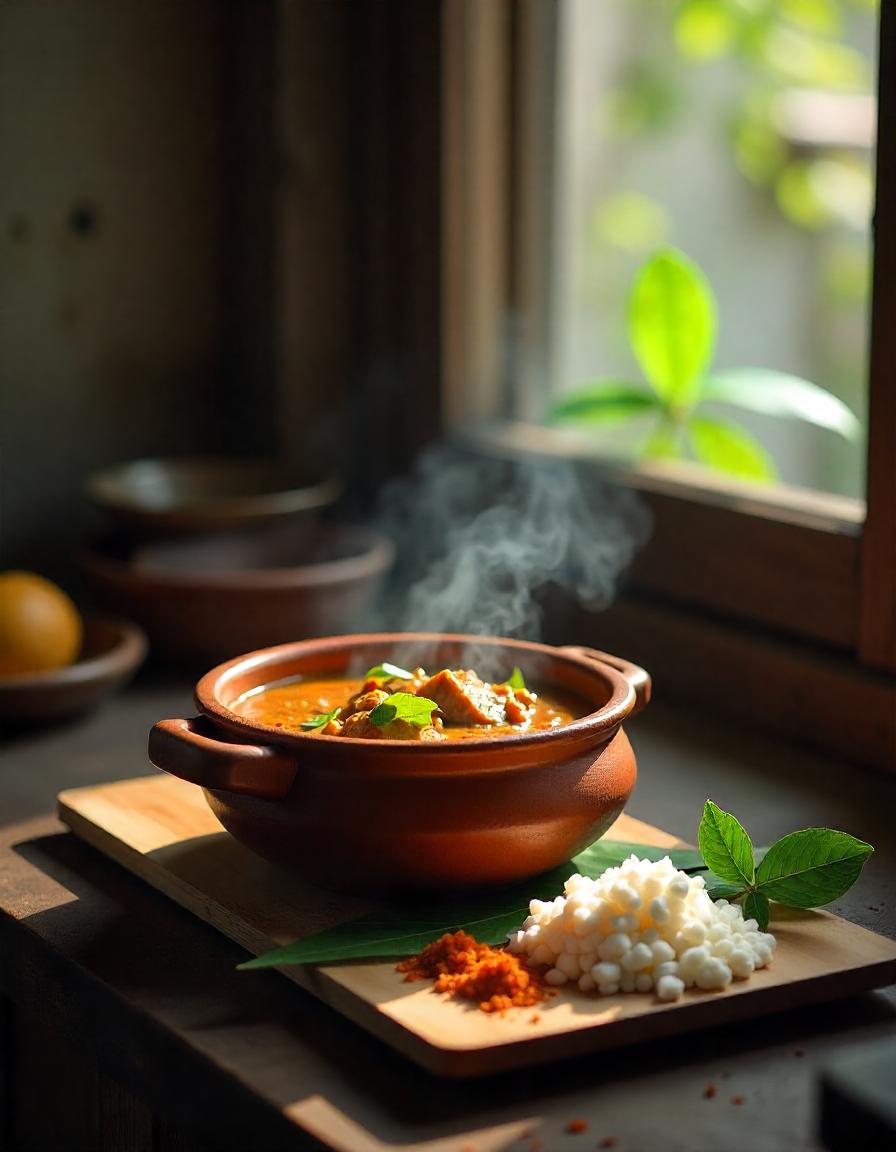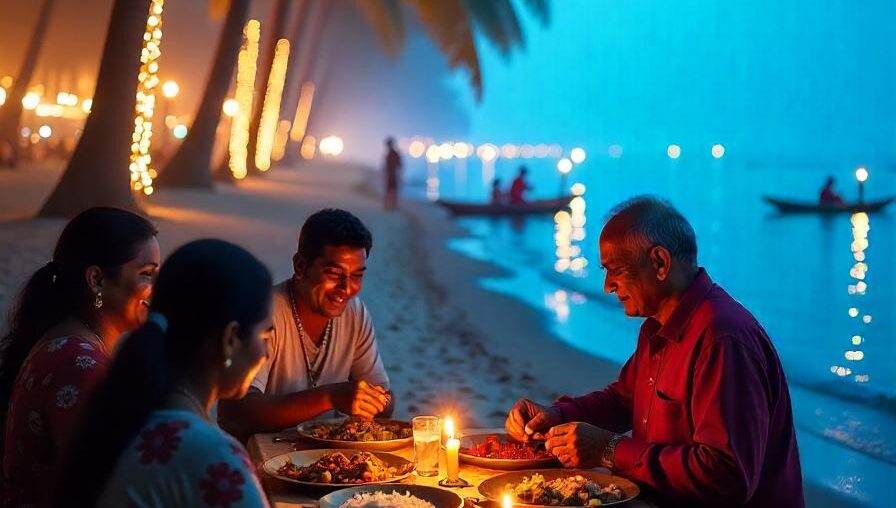A brief trip will guide you through the southern lands where coconut trees sway alongside Arabian Sea waves while spices manifest themselves as tales instead of mere food additives. India’s southwestern corner safeguards a green paradise called Kerala which I am describing right now.
Per personal experience or you both possess Malayali friends or managed to share their dinner table you are aware Kerala takes fish very seriously.
The content does not live only through food spices.
The First Time I Had Meen Pollichathu
I still remember the first time I tasted Meen Pollichathu. It was wrapped in a banana leaf, steaming with the most fragrant blend of spices I’d ever inhaled. The fish was pearl spot (Karimeen, a local favorite), marinated in a paste of shallots, garlic, green chilies, turmeric, and a whisper of coconut oil, then grilled gently in that banana leaf like a love letter to the sea.
It was unlike anything I’d ever tasted before. Earthy. Smoky. Spicy, but not aggressive. Just…perfect.
It made me realize something: fish in Kerala isn’t a dish—it’s a culture.

A Coastal Legacy That Runs Deep
Kerala’s relationship with fish goes way beyond the kitchen. It’s deeply tied to the geography and the soul of the place. With over 590 km of coastline and countless backwaters and rivers, it’s no wonder that fishing is both a livelihood and a legacy here.
And every community—whether it’s the Christian families in Kottayam, the Muslim households of Kozhikode, or the Hindu Brahmins of Thrissur—has their own spin on how to cook fish.
It’s not just about flavor. It’s about identity.
So Many Styles, So Little Time
Let’s be real: most people hear “Indian fish curry” and immediately imagine something red and fiery, right? Probably swimming in chili and tamarind? That’s fair. But that’s just one note in Kerala’s symphony.
Let me break down just a few of the many ways Malayalis transform fish into art:
1. Meen Moilee
If you’re into creamy, mild flavors, Meen Moilee is your dream dish. Think of it as the lovechild of coastal comfort and subtle spice. It’s a coconut milk-based curry—delicate, yellow with turmeric, and laced with curry leaves.
You’ll find this in many Christian homes, especially around festive times. Paired with appam (those soft, lace-edged rice pancakes), it’s the kind of meal that makes you sigh with joy.
2. Fish Fry (but not like you think)
Kerala-style fish fry is bold. The fish is marinated with red chili powder, turmeric, black pepper, and a touch of vinegar—then shallow-fried till the outside is crisp and charred just right.
Eat it hot, with some matta rice and a squeeze of lime, and you’re in heaven.
3. Fish Mappas
This one’s a Syrian Christian favorite. Like Meen Moilee but with more punch—thicker gravy, deeper spice. Tomatoes, green chilies, coconut milk—it’s comfort food with a bit of a kick.
4. Kudampuli Fish Curry
This is the red-hot one everyone talks about. It’s from the southern part of Kerala, especially around Kollam and Trivandrum. The secret ingredient? Kudampuli (Malabar tamarind), which gives the dish its signature sour depth.
No coconut here. Just pure fire and tang. It’s usually cooked in a manchatti—a traditional clay pot that gives the curry a smoky edge as it simmers over a slow flame.

The Banana Leaf Experience
Have you ever eaten off a banana leaf? If not, you’re missing out on something deeply satisfying. It’s not just eco-friendly—it enhances the taste, especially when you pour hot curry over steamed rice and the leaf releases its subtle aroma.
In Kerala, serving fish this way isn’t just common—it’s a ritual. Weddings, family gatherings, even roadside toddy shops (yes, those rustic little places that serve palm wine and killer fish dishes) serve meals this way.
A Culture of Freshness
What sets Kerala’s fish dishes apart, in my opinion, is the emphasis on freshness. The best meals I’ve had were with fish caught just that morning—cleaned, cooked, and served within hours.
Even the spices are ground fresh. No shortcuts. You can smell the difference. You can taste it.
And while global food trends keep changing (sous vide here, fermented there), Kerala quietly holds on to its roots. That’s probably why dishes like Meen Pollichathu or Kudampuli curry are now popping up on menus even in places like London, Sydney, and Toronto. Slow food is trending—and Kerala’s been doing it all along.
Fish Beyond the Plate
Here’s something interesting: fish in Kerala isn’t just about food. It shows up in art, in festivals, even in local proverbs. There’s an old Malayalam saying: “Meenillatha sadhya, kathiyillaatha kadha”—which roughly means, “A feast without fish is like a story without suspense.”
And it’s true. Fish is part of the emotional landscape.
When a son returns home from the Gulf after two years, you can bet his mom’s making Karimeen fry. When it rains all day and power’s out, someone’s cooking fish in the backyard kitchen on a wood fire. These aren’t just meals—they’re memories.

Where Tradition Meets Today
Lately, I’ve seen a wave of young Malayali chefs reimagining these traditional dishes—making them lighter, plating them with finesse, or pairing them with craft cocktails. Some are even incorporating local fish into sushi or tapas.
It’s an exciting time. The world’s catching on to Kerala’s culinary depth, and not just because of its curries. There’s something deeply soulful, yet innovative happening.
And if you’re a foodie—or just someone curious about the latest food & beverage news—keep an eye on what’s coming out of Kerala. Because this isn’t a trend. It’s a rediscovery.
Final Thought?
Next time someone tells you Indian fish is just “curry,” smile politely—and invite them over.
Serve them something wrapped in a banana leaf, maybe with some toddy on the side.
Let the fish do the talking.




